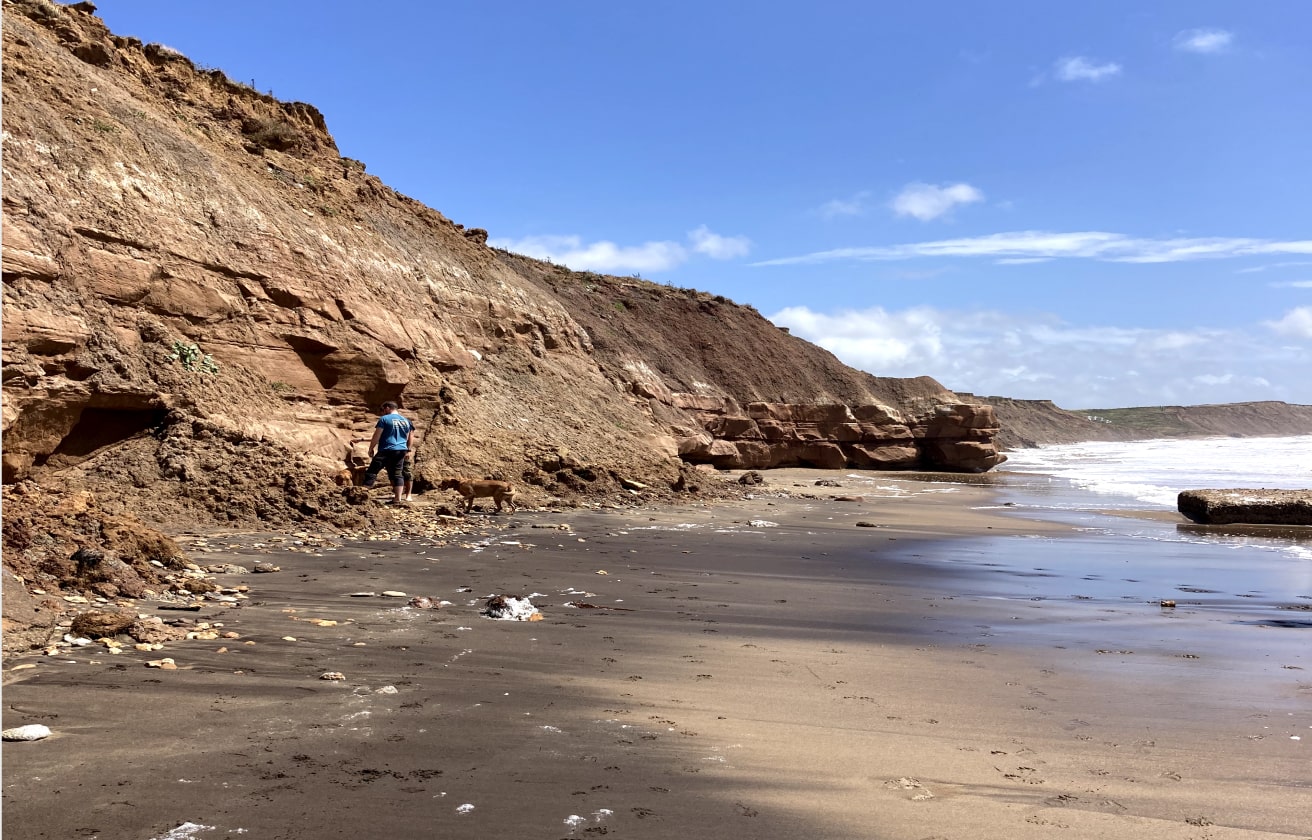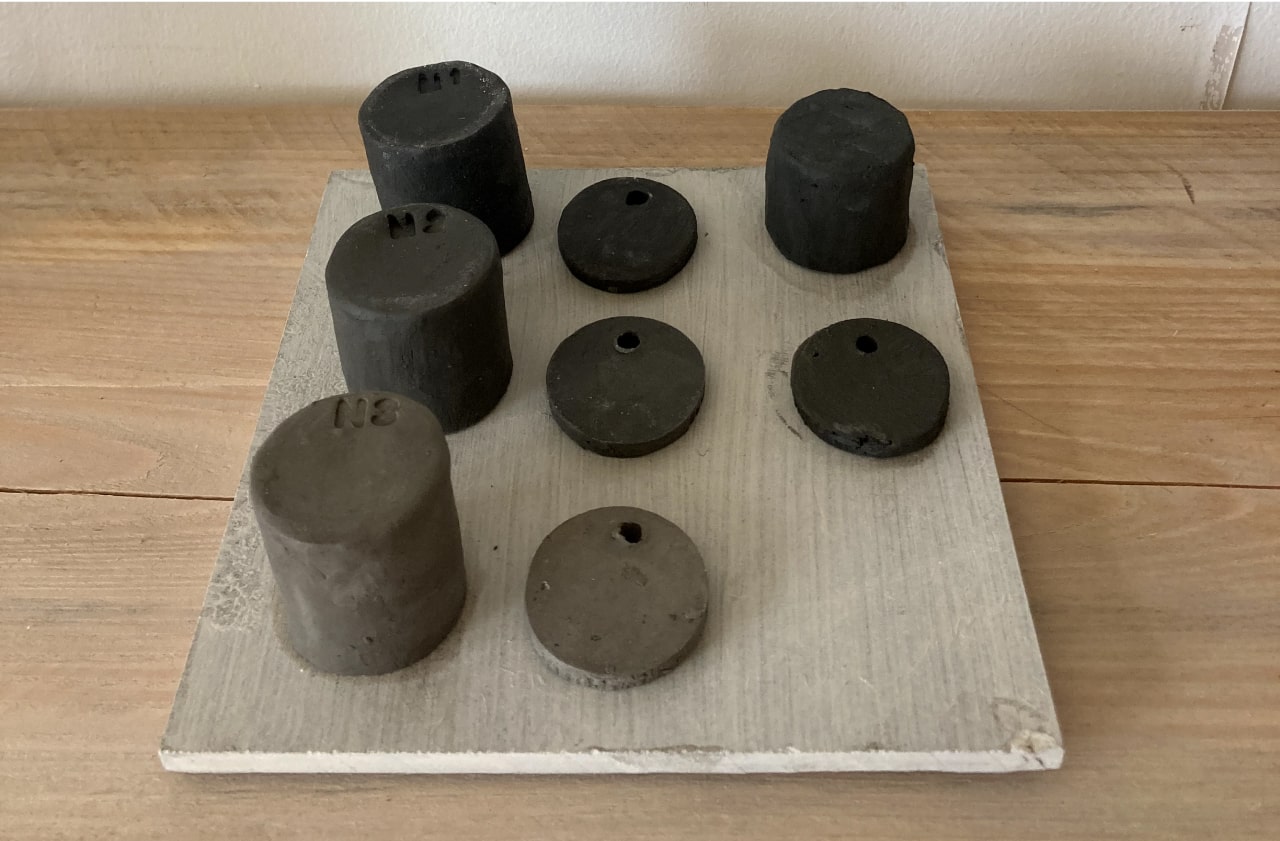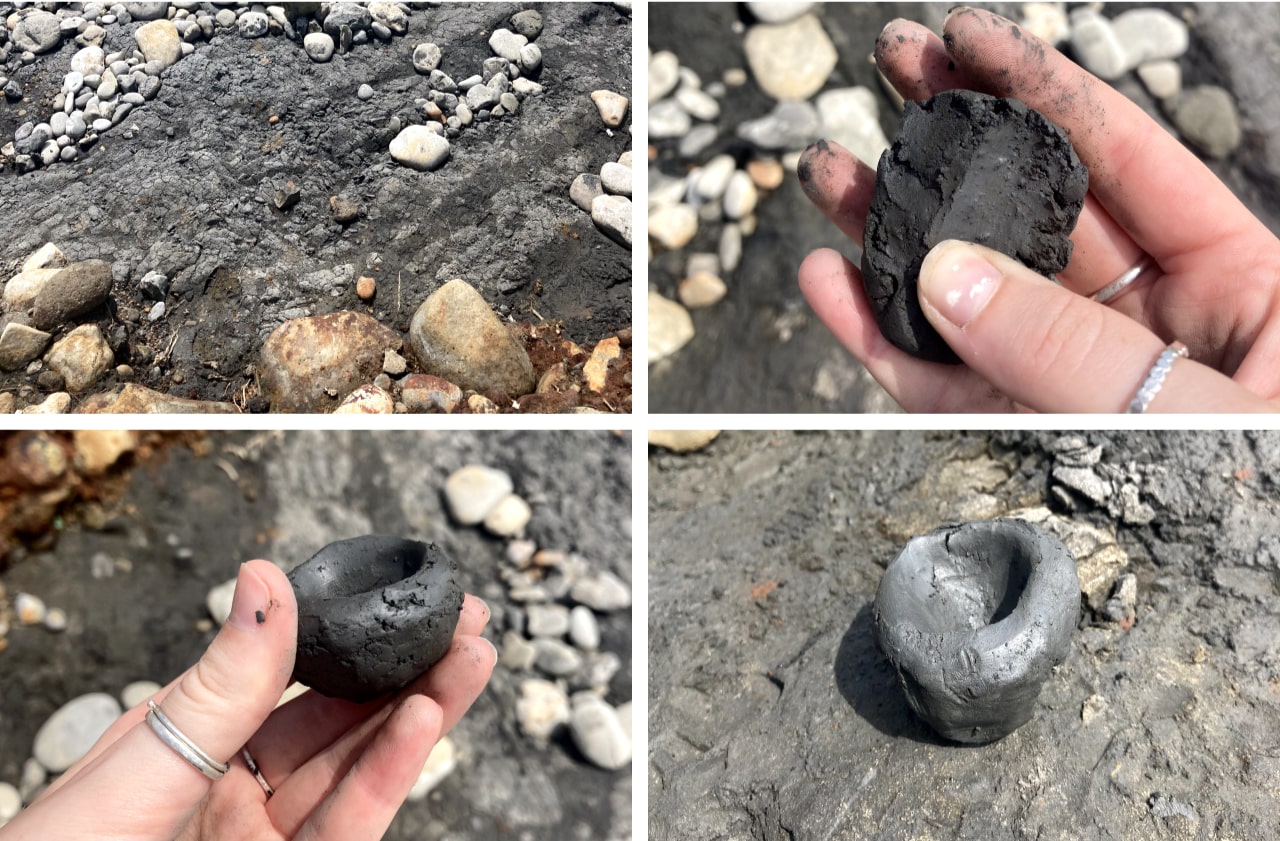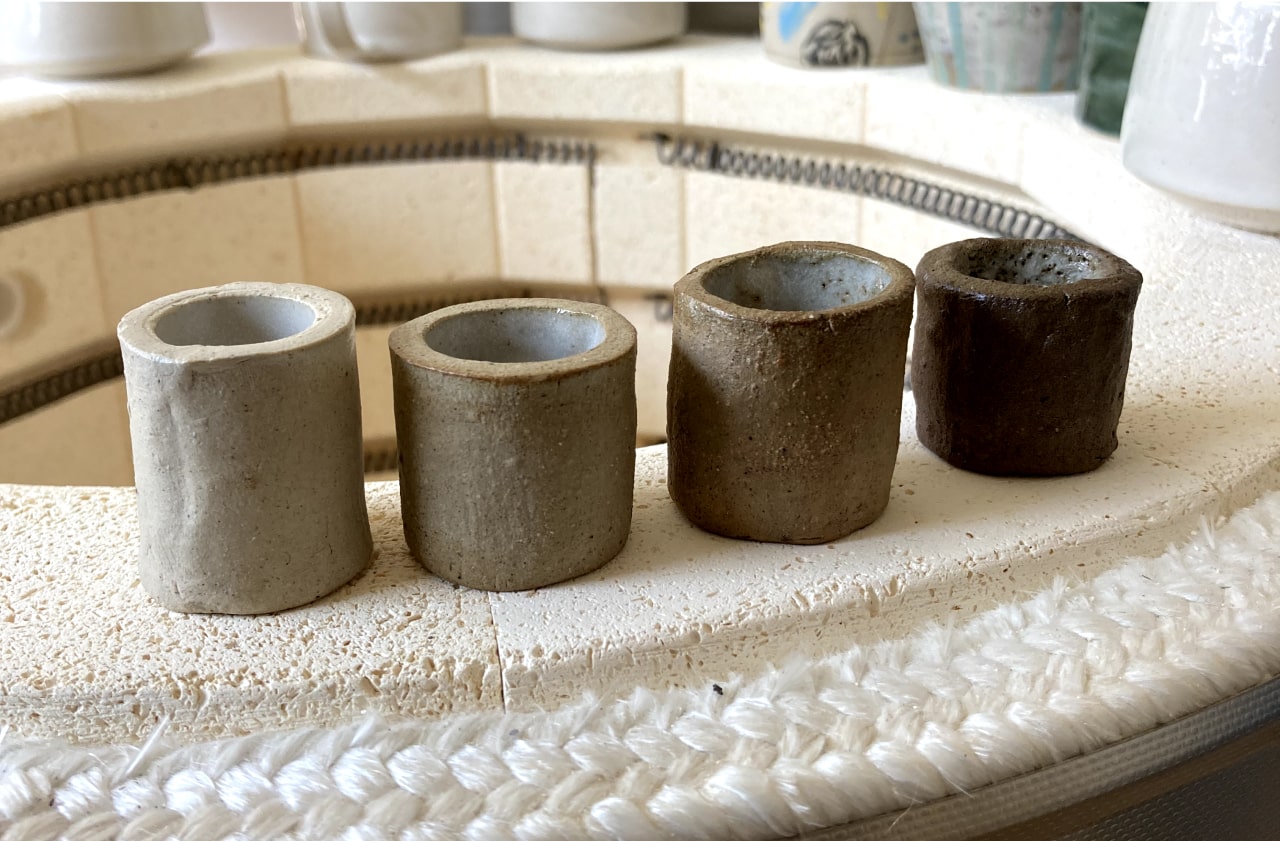
10th Aug 2023
It’s a happy coincidence that even though my partner Charlie isn’t a geologist, he does have a geology degree. So over the past few months, I’ve been exploring the Isle of Wight with my own personal, sometimes slightly miss-informed, geologist which has introduced me to a whole new world of clay. While the learning has been very experimental and mainly consisted of trial and error I have really enjoyed making some more story driven ceramic pieces.
If you don’t have yourself a geologist partner it can be tricky to spot clay in the wild and have the confidence to collect, shape and fire it. My advice? If it feels and looks like clay, it probably is and heck, whats the harm in trying? The basics... look for smooth and malleable soil that is easily distinguishable from the surrounding materials. Due to its unique mineral composition, coastal clay can be amazing hues of red, yellow, beige, blue, green or grey, you name it.

I tend to collect clay while on walks with my dog, a poo bag seems to be the prefect size to test a few hundred grams before collecting large quantities. As to be expected of seaside locations, try to head out at low tide when the exposed clay is easily accessible and safer to explore. Don’t take huge chunks from landslips or you might end up under one and be generally safety aware.

Before lugging a few kg of clay back home with you take some time to do a quick plasticity test.

Many people have asked if it’s both legal and moral to be collecting wild clay and to be honest I’ve researched a lot and spoken to many other potters and no one has had a definitive answer... yet. So to forage responsibly and sustainably I only take what I need and try my best to avoid causing unnecessary disturbance to the ecosystem. This mainly means collecting at landslips and only in small batches from time to time.
I’ll soon be moving off the Isle of Wight but I hope to keep visiting and collecting new clay deposits as well as searching for other wild clays across the South West. Got any good spots you’d like to share? Hit me up on Instagram @studiogrebot
Back Newsletter Sign Up